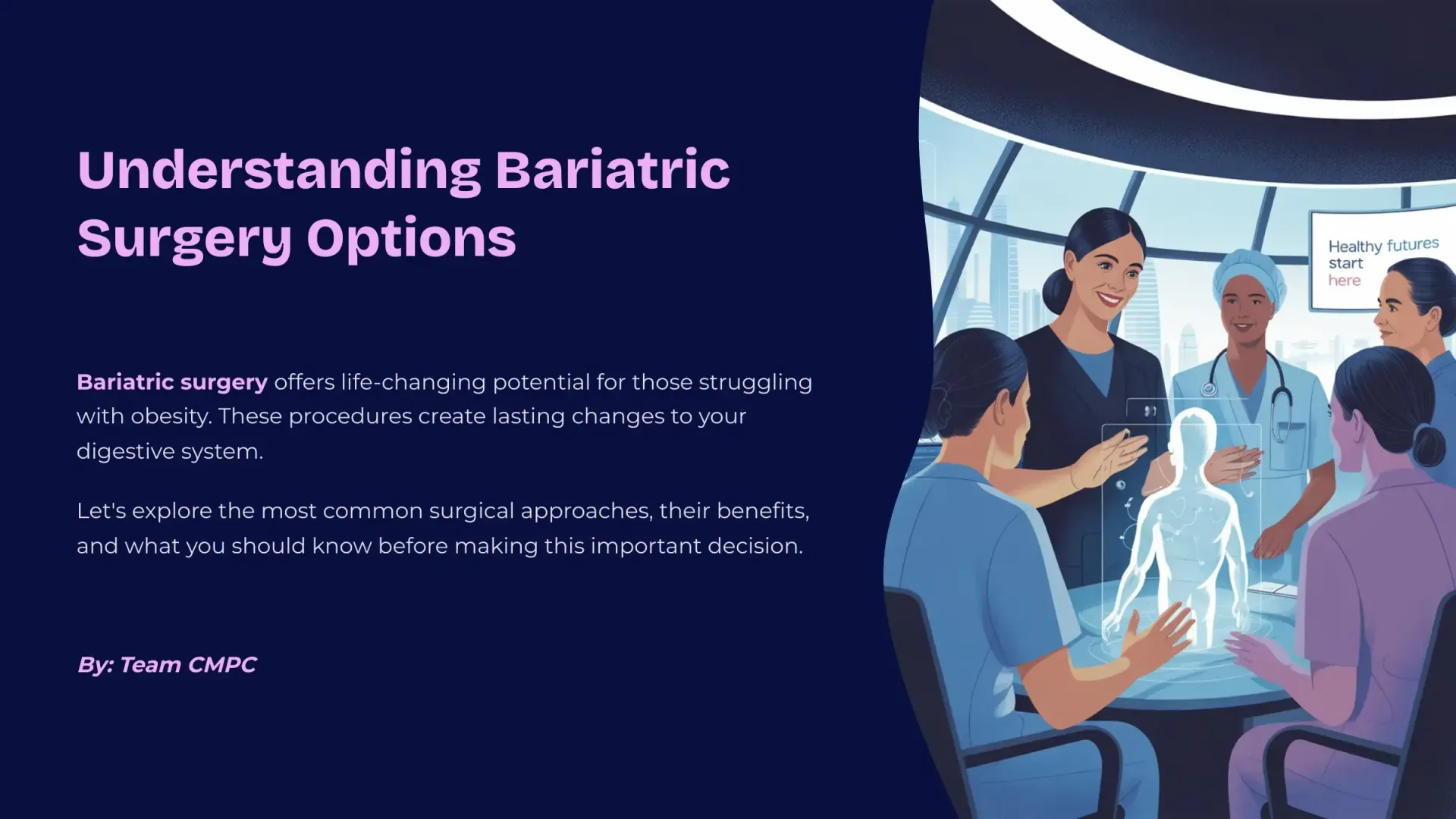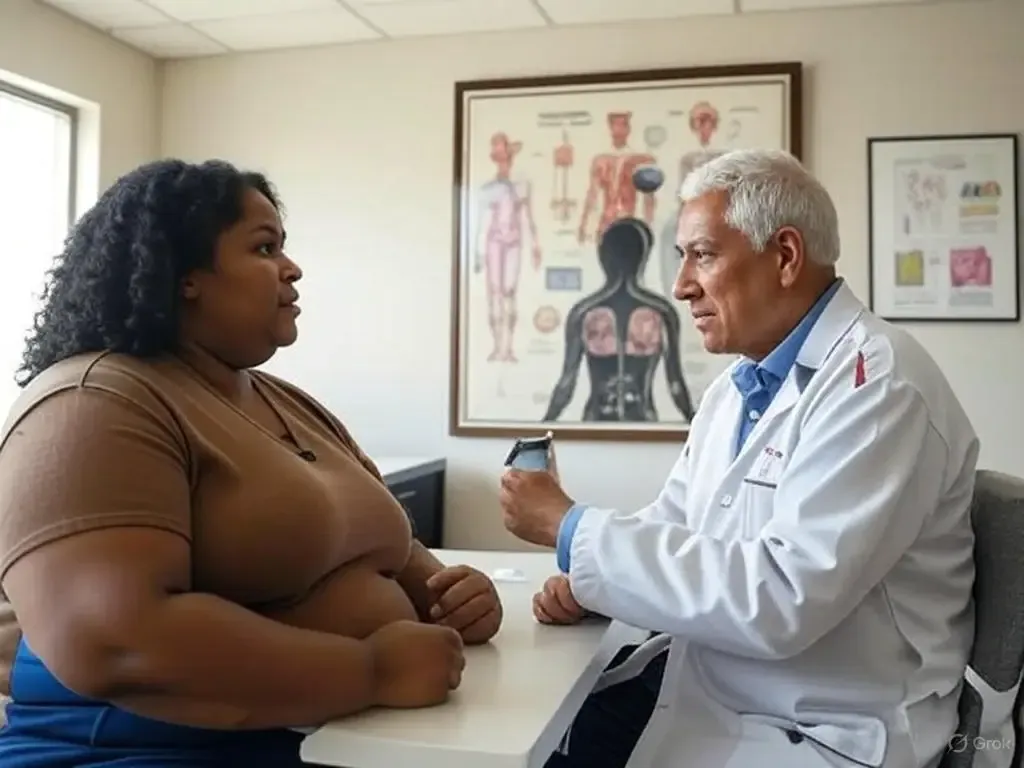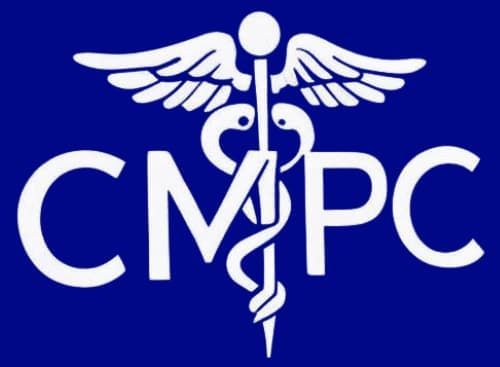
If you're considering weight loss surgery in Ottawa, you likely have questions and concerns about potential complications. This is understandable and shows you're taking a thoughtful approach to this critical health decision. At CMPC, we believe that making an informed choice about any weight management procedure requires a thorough understanding of both benefits and possible risks.
As medical professionals specializing in weight management solutions, we want to provide transparent information about surgical complications while highlighting safer alternatives that might better address your needs. Your long-term health is our priority, so discussing potential complications openly and honestly is essential to our care approach.
Here's what you should know.
There are three ways to address excessive weight loss:
1. Diet control and exercise.
2. Surgical weight loss.
3. Non-surgical weight loss.
We will discuss the impact and consequences of surgical and non-surgical weight loss here, so you can make an informed decision about the best option for you.

Understanding Traditional Surgical Weight Loss Options
Before exploring potential complications, it's helpful to understand the most common surgical weight loss procedures available.
Types of Bariatric Surgeries and Their Approaches
Several surgical options exist, each with different mechanisms and risk profiles:
- Gastric bypass (Roux-en-Y): This procedure creates a small stomach pouch and reroutes the digestive tract, limiting food intake and reducing nutrient absorption. It involves restrictive and malabsorptive components, making it highly effective and carrying more significant risks due to its complexity.
- Sleeve gastrectomy: This increasingly popular option removes approximately 80% of the stomach, creating a banana-shaped "sleeve" restricting food intake. While less complex than bypass, it still represents a primary surgical intervention with permanent anatomical changes.
- Adjustable gastric banding: This procedure places an inflatable band around the upper portion of the stomach to create a small pouch above the band, limiting food consumption. Though less invasive than other surgeries, it involves implanting a foreign device that remains in the body long-term.
- Biliopancreatic diversion with duodenal switch: This complex procedure combines sleeve gastrectomy with intestinal rerouting, creating significant malabsorption. While highly effective for weight loss, it carries the highest complication rates among common bariatric procedures.
Each approach involves permanent or semi-permanent changes to your digestive anatomy and requires lifelong adaptation. For many patients with obesity, these surgical interventions have provided life-changing results, but understanding their potential complications remains essential for informed decision-making.
Immediate Post-Surgical Complications
The days and weeks following weight loss surgery present several possible complications that patients should know before proceeding.
Surgical Recovery Risks
The immediate post-operative period carries several potential concerns:
- Infection development: Infections can develop at incision sites or internally despite careful sterile technique. Surgical site infections occur in approximately 1-3% of bariatric procedures, with higher rates in open surgeries than laparoscopic approaches. These infections may range from minor wound issues resolved with antibiotics to more serious internal infections requiring additional intervention.
- Bleeding complications: Internal bleeding or bleeding at incision sites occurs in approximately 1-2% of bariatric procedures. While most bleeding resolves without intervention, some cases require blood transfusion or even reoperation to identify and control the bleeding source. Risk factors include blood-thinning medications, previous abdominal surgeries, and certain medical conditions.
- Blood clot formation: Deep vein thrombosis (DVT) and potential pulmonary embolism represent serious post-surgical risks, occurring in about 0.3-2% of patients despite preventive measures. These dangerous clots typically form in the legs due to reduced mobility after surgery, with the risk of travelling to the lungs, where they can cause serious or even fatal complications. Early mobility, compression devices, and sometimes blood-thinning medications help reduce this risk.
- Respiratory problems: Pneumonia, atelectasis (collapsed lung areas), and respiratory insufficiency can occur post-surgery, particularly in patients with pre-existing respiratory conditions like sleep apnea or obesity hypoventilation syndrome. The combined effects of anesthesia, pain medication, and abdominal pressure can compromise lung function during recovery. Aggressive breathing exercises, early ambulation, and sometimes respiratory support help mitigate these risks.
- Leaks along surgical connections: Perhaps the most serious early complication, leaks occur when digestive contents escape through surgical connection points, creating the potential for severe infection and sepsis. Gastric bypass procedures have approximately a 1-5% leak rate, while sleeve gastrectomy carries about 1-3% risk. These leaks often require emergency intervention, extended hospitalization, and sometimes additional surgical procedures.
- Adverse anesthesia reactions: General anesthesia, required for bariatric surgery, carries its risk profile, ranging from mild complications like nausea and vomiting to serious events like malignant hyperthermia or aspiration. Proper pre-surgical screening helps identify patients at higher risk for anesthesia complications, but some reactions remain unpredictable.
- Wound complications: Beyond infection, surgical wounds may develop complications like dehiscence (opening of the incision), seromas (fluid collections), or poor healing, particularly in patients with diabetes or nutritional deficiencies. These complications can delay recovery and sometimes require additional procedures to resolve.
For concerned people considering surgical weight loss options, understanding these immediate risks helps prepare for the recovery period and recognize warning signs requiring prompt medical attention. While most patients navigate this period without serious complications, being informed about potential issues ensures appropriate vigilance during recovery.
Long-Term Complications Following Weight Loss Surgery
Beyond the immediate recovery period, bariatric surgery can lead to several long-term complications that may affect patients for months or even years after the procedure.
Nutritional and Metabolic Complications
Permanent changes to the digestive system can create lasting nutritional challenges:
- Vitamin and mineral deficiencies: Reduced food intake and malabsorptive effects lead to high rates of nutritional deficiencies, particularly concerning vitamins B12, D, iron, calcium, and folate. These deficiencies affect 30-50% of surgical patients and can lead to serious health consequences, including anemia, neuropathy, osteoporosis, and immune dysfunction if not adequately addressed. Lifelong supplementation becomes mandatory rather than optional.
- Protein malnutrition: Inadequate protein absorption or intake affects 10-20% of bypass and duodenal switch patients, potentially causing muscle wasting, hair loss, decreased immunity, and poor healing. More severe cases may require hospitalization for nutritional support. This risk increases over time as dietary compliance sometimes diminishes.
- Dumping syndrome development: Rapid emptying of stomach contents into the small intestine affects up to 50% of gastric bypass patients, causing symptoms like nausea, vomiting, diarrhea, dizziness, and fatigue shortly after eating, particularly after consuming high-sugar or high-fat foods. While sometimes considered a "helpful" side effect that discourages unhealthy eating, severe dumping can significantly impact quality of life and nutritional status.
- Hypoglycemic episodes: Some patients, particularly after gastric bypass, develop post-meal hypoglycemia (abnormally low blood sugar) that can cause confusion, anxiety, shakiness, excessive sweating, and even loss of consciousness. This challenging complication affects approximately 5-10% of bypass patients and sometimes proves difficult to manage despite dietary modifications.
- Gallstone formation: Rapid weight loss increases gallstone development risk, affecting 30-40% of bariatric patients who don't receive preventive therapy. These painful stones sometimes require surgical removal. The risk is highest during the first 6-18 months when weight loss is most rapid.
- Kidney stone development: Changes in digestive function can alter urinary composition, increasing kidney stone risk, particularly after malabsorptive procedures. These painful stones affect approximately 8% of bypass patients over time.
These nutritional and metabolic complications necessitate lifelong medical monitoring and dietary vigilance for surgical weight loss patients, representing an ongoing commitment rather than a one-time intervention.
Anatomical and Functional Complications
Physical changes to the digestive tract can create various long-term issues:
- Stricture or stenosis formation: Narrowing at surgical connection points affects 5-20% of bariatric patients, depending on the procedure type, causing difficulty swallowing, vomiting, food intolerance, and sometimes severe malnutrition. Endoscopic dilation often addresses this issue, though some patients require surgical revision.
- Internal hernia development: Particularly after gastric bypass, the rearranged intestine can slip through spaces created during surgery, potentially leading to intestinal obstruction or strangulation. This serious complication affects 2-5% of bypass patients, sometimes occurring years after the initial surgery, and typically requires emergency surgical intervention.
- Adhesions and bowel obstructions: Scar tissue formation inside the abdomen can create painful adhesions or even bowel obstructions requiring hospitalization or surgical intervention. This affects approximately 5% of bariatric surgery patients over their lifetime.
- Gastroesophageal reflux disease (GERD): While bypass surgery often improves reflux, sleeve gastrectomy may worsen or create new-onset GERD in 20-30% of patients. Chronic acid exposure increases esophageal cancer risk and significantly impacts the quality of life when poorly controlled.
- Chronic abdominal pain: Approximately 15-30% of bariatric surgery patients develop chronic abdominal pain of varying severity and causes. This sometimes-elusive symptom proves challenging to diagnose and treat, occasionally requiring additional surgical exploration or revision.
- Persistent nausea and vomiting: Long-term digestive symptoms affect 5-10% of patients, sometimes despite dietary compliance. When persistent, these symptoms lead to dehydration, electrolyte imbalances, and malnutrition, requiring medical intervention.
- Weight regain potential: While not a complication in the traditional sense, approximately 20-30% of bariatric surgery patients regain significant weight within 5 years, sometimes due to anatomical changes like pouch dilation or stoma enlargement that reduce the procedure's effectiveness. It often creates psychological distress and sometimes necessitates revision surgery.
Patients considering surgical weight loss should understand that while these complications don't affect most individuals, they represent genuine concerns requiring ongoing medical relationships rather than a "one-and-done" surgical approach.
Psychological Complications Following Weight Loss Surgery
The physical changes after weight loss surgery can also lead to psychological challenges that many prospective patients may not anticipate.
Emotional and Behavioral Health Considerations
Psychological adjustments after surgery can be significant:
- Depression development or exacerbation: Studies show that 5-25% of bariatric patients experience depression post-surgery, sometimes despite successful weight loss. Contributing factors include difficult recovery, unrealistic expectations, body image challenges, and biochemical changes affecting mood regulation. Those with a pre-existing depression history face a higher risk for post-surgical depression exacerbation.
- Body image dissatisfaction: Rapid weight loss often leaves excess skin and body contour irregularities that create new body image concerns. Approximately 70% of bariatric patients report some dissatisfaction with post-weight loss body appearance, with many considering additional cosmetic procedures despite the added surgical risks.
- Relationship dynamic changes: As physical appearance and lifestyle habits change dramatically, relationships often require significant adjustment. Some partnerships strengthen through this journey, while others face new strains or jealousy issues as the patient's identity and social reception evolve. Family therapy sometimes helps navigate these complex transitions.
- Transfer addiction development: Some patients replace food-related coping mechanisms with other potentially problematic behaviours like alcohol use, shopping, gambling, or relationship issues. Research suggests this "addiction transfer" affects approximately 5-10% of bariatric patients, requiring specialized psychological support.
- Eating disorder emergence: Disordered eating patterns like binge eating, extreme restriction, or new compensatory behaviours sometimes develop or resurface after surgery, affecting approximately 10-15% of patients. The forced dietary restrictions combined with psychological adjustment create vulnerability to these patterns.
- Identity reformation challenges - Adapting to a dramatically different body and social reception requires significant psychological adjustment. Many patients report feeling "lost" between their former identity and their new physical reality, necessitating psychological support to integrate these changes healthily.
- Disappointment with life changes - Some patients develop "Bariatric divorce syndrome" or experience other significant life disappointments when weight loss doesn't solve social, romantic, or professional problems as hoped. Managing expectations about what weight loss can and cannot change represents a significant psychological component of successful outcomes.
These psychological complications underscore the importance of comprehensive pre-surgical psychological evaluation and ongoing support throughout the weight loss journey. For overweight patients considering surgical weight loss, understanding these potential psychological challenges helps prepare for the complete transformation experience beyond just physical changes.
Procedure-Specific Complications
Different weight loss surgeries carry unique risks that patients should consider when evaluating options.
Gastric Bypass (Roux-en-Y) Specific Complications
This common procedure involves distinct risk considerations:
- Marginal ulcer development: Ulcers form at the connection between the stomach pouch and small intestine in approximately 5-15% of bypass patients. These painful ulcers can cause bleeding, perforation, or stricture formation and often require intensive medical therapy. Risk factors include smoking, NSAID use, and H. pylori infection.
- Internal hernia formation: The rearranged intestinal configuration creates potential spaces where the bowel can become trapped, leading to obstruction or strangulation. This unique bypass complication affects 2-5% of patients and typically requires emergency surgical intervention. It can occur years or even decades after the original procedure.
- Reactive hypoglycemia occurrences: Approximately 5-10% of bypass patients develop problematic post-meal hypoglycemia due to altered hormonal responses, causing symptoms ranging from mild lightheadedness to severe confusion or even loss of consciousness. This challenging complication sometimes proves difficult to manage despite dietary modifications.
- Anastomotic stenosis development: Narrowing the connection between the stomach pouch and small intestine affects approximately 5-12% of bypass patients, causing progressive difficulty with solid food consumption, vomiting, and sometimes severe malnutrition. Endoscopic dilation often addresses this issue, though some patients require surgical revision.
- Higher malnutrition risk profile: The combined restrictive and malabsorptive elements create greater nutritional deficiency risk than purely restrictive procedures. Without strict adherence to supplementation protocols, bypass patients face significant risk for multiple deficiencies with serious health consequences.
- Blind loop syndrome: The bypassed portion of the intestine can develop bacterial overgrowth, causing bloating, diarrhea, and malabsorption in 2-5% of patients. This sometimes requires antibiotic treatment or even surgical revision in severe cases.
While gastric bypass offers excellent weight loss results and resolves many obesity-related conditions, these specific complications require careful consideration and lifelong medical monitoring.
Sleeve Gastrectomy-Specific Complications
This increasingly popular procedure carries its risk profile:
- GERD development or worsening: Unlike bypass, which often improves reflux, sleeve gastrectomy worsens or creates new-onset GERD in 20-30% of patients. This chronic acid exposure increases esophageal cancer risk and significantly impacts the quality of life when poorly controlled. Some patients ultimately require conversion to bypass if GERD becomes severe.
- Staple line complications: The long staple line created during sleeve formation can leak (1-3% risk) or bleed (1-2% risk), sometimes requiring emergency intervention. The upper portion of the staple line near the gastroesophageal junction carries the highest leak risk due to thinner tissue and higher pressure.
- Sleeve stenosis formation: Narrowing of the newly created sleeve shape affects 1-4% of patients, causing progressive difficulty swallowing, vomiting, and sometimes malnutrition. Endoscopic dilation addresses most cases, though some require surgical revision.
- Gastric tube dilation over time: The restrictive sleeve can stretch over years, reducing effectiveness and contributing to weight regain in approximately 20% of patients. This anatomical change sometimes necessitates revision surgery to restore restriction.
- Twisted sleeve development: Rarely (less than 1%) can the sleeve twist along its axis, creating a functional obstruction that requires surgical correction. This complication typically presents with a sudden onset of severe pain and complete food intolerance.
- Limited revisional options: If complications or insufficient weight loss occur, revision options after sleeve gastrectomy are more limited than other procedures because the removed stomach portion cannot be restored. This permanent nature requires careful initial consideration.
These sleeve-specific complications have contributed to the ongoing debate about whether sleeve or bypass represents the optimal first-line surgical approach for patients with significant obesity or GERD concerns.
Adjustable Gastric Banding Specific Complications
Though less commonly performed now, this procedure has unique considerations:
- Band erosion into the stomach: Over time, the band can erode through the stomach wall in approximately 3-8% of patients, requiring band removal and potential conversion to another procedure. This erosion develops gradually with progressive pain or port infection, which are common symptoms.
- Band slippage occurrence: Approximately 3-10% of band patients experience band slippage, where the lower stomach herniates upward through the band, creating obstruction, vomiting, and sometimes acute painful episodes requiring emergency intervention.
- Port or tubing problems: The subcutaneous port used for band adjustments can flip, leak, disconnect, or become infected in approximately 5-15% of patients. These mechanical issues often require minor surgical procedures to address.
- Esophageal dilation development: Persistent obstruction at the band level can cause progressive esophageal enlargement in 3-10% of patients, sometimes leading to swallowing dysfunction that persists even after band removal. This represents one of the most concerning long-term band complications.
- Pouch dilation formation: The small stomach pouch above the band can stretch over time, reducing restriction and weight loss effectiveness. It impacts approximately 15-25% of band patients over the long term and sometimes requires revision.
- High reoperation rates: Studies show that up to 30-50% of band patients require some form of reoperation within 10 years, whether for complication management or conversion to another procedure due to inadequate weight loss. This high secondary surgery rate has contributed to the declining popularity of banding.
- Foreign body reaction possibilities: As with any implanted device, the band can trigger foreign body reactions in some patients, causing inflammation, discomfort, or immune system responses that necessitate removal. It affects a small but significant minority of band recipients.
The declining popularity of gastric banding globally stems mainly from recognizing these long-term complications and higher reoperation rates compared to other bariatric approaches.
Safer Alternatives: The Allurion Gastric Balloon System
At CMPC, we understand these surgical concerns, so we specialize in the Allurion Gastric Balloon System. This non-surgical weight loss solution eliminates many complications of traditional weight loss surgeries.
The Allurion Advantage: Minimizing Complication Risks
The approach offers several safety advantages:
- No surgical intervention is required: The procedure involves simply swallowing a capsule attached to a thin tube, eliminating all surgical risks, including infection, bleeding, hernia formation, and anesthesia complications. This fundamental difference removes all the categories of complications that concern many patients.
- No endoscopy needed: Unlike traditional balloons, Allurion requires no endoscopic placement or removal, eliminating risks of esophageal injury, sedation complications, and procedural discomfort. The swallowable capsule format represents a significant advancement in patient comfort and safety.
- Completely reversible nature: The balloon remains in place temporarily (approximately 16 weeks) before passing naturally, creating no permanent anatomical changes and preserving all future treatment options. This reversibility provides significant peace of mind for patients concerned about permanent surgical alterations.
- Minimal nutritional impact: The balloon creates feelings of fullness without altering digestive processes or nutrient absorption, virtually eliminating the nutritional deficiency risks associated with surgical approaches. Standard healthy eating rather than complex supplementation protocols become sufficient.
- No foreign material permanence: After approximately 16 weeks, the balloon automatically deflates and passes naturally through digestion, eliminating long-term foreign body complication risks. This "self-limiting" nature prevents the chronic complications seen with permanent implants or anatomical alterations.
- Normal digestive function preservation: The balloon works with your existing anatomy rather than permanently altering it. It maintains normal digestive processes and eliminates risks of dumping syndrome, hypoglycemia, strictures, hernias, and other common functional complications after surgery.
- No possibility of surgical connection leaks: The absence of surgical anastomoses (connections) eliminates the risk of leaks, one of the most serious early surgical complications. This fundamental safety advantage removes a significant concern that many prospective weight loss patients express.
For patients concerned about surgical complications, the Allurion system provides a compelling alternative with a significantly improved safety profile compared to traditional surgical approaches.
Clinical Evidence Supporting Allurion's Safety Advantage
Extensive research demonstrates the favourable safety profile:
- Low serious adverse event rates: Multiple clinical studies show serious adverse event rates below 0.2%, dramatically lower than the 3-5% serious complication rates associated with bariatric surgery. This safety margin provides significant reassurance for patients concerned about procedural risks.
- Absence of long-term anatomical risks: Long-term follow-up confirms the absence of chronic complications seen after surgery, with normal digestive function resuming after balloon passage. Eliminates concerns about lifelong anatomical complications that can emerge years after surgical procedures.
- Minimal discontinuation necessity: Less than 2% of patients require early balloon removal due to intolerance or complications, compared to higher surgical revision or reversal rates. This high completion rate demonstrates the balloon's excellent tolerability.
- No anesthesia or surgical recovery period: Eliminating anesthesia and surgical recovery removes entire categories of complications while allowing immediate return to most daily activities. This minimal disruption aspect particularly appeals to busy professionals.
- Proven effectiveness despite lower risk: Studies demonstrate average weight loss of 10-15% of total body weight during the program, comparable to first-year results from some surgical options but without the permanent risks. This favourable risk-benefit ratio makes Allurion an attractive option for many patients.
- Maintained weight loss in follow-up studies: Most patients maintain significant weight loss beyond the balloon treatment period with proper lifestyle implementation. This addresses concerns about temporary results while avoiding permanent surgical risks.
This strong safety evidence supports our confidence in recommending the Allurion system to patients concerned about weight loss treatment complications while still seeking effective results.
Who Benefits Most from Non-Surgical Alternatives?
While individual situations vary, certain groups often find non-surgical options like the Allurion system particularly appropriate:
- Patients with moderate obesity: Those with a BMI between 27 and 40 often achieve excellent results with non-surgical approaches while avoiding unnecessary surgical risks. This BMI range represents a large portion of patients seeking weight management solutions.
- Individuals with surgery concerns: Those specifically worried about surgical complications, permanent changes, or recovery time often prefer the Allurion system's minimal risk profile. The absence of surgical incisions, anesthesia, and permanent alterations addresses these concerns.
- Patients with certain medical conditions: Some medical conditions increase surgical risks significantly, making non-surgical options safer. Conditions like severe cardiopulmonary disease, extensive previous abdominal surgery, or certain bleeding disorders may favour non-surgical approaches.
- Those seeking diagnostic trials: Some patients benefit from using the temporary balloon as a "trial run" before committing to permanent surgical changes. This approach provides valuable insights into how their body responds to restriction-based weight loss.
- Individuals valuing future flexibility: Younger patients or those wanting to preserve all future medical options sometimes prefer non-permanent interventions that don't alter their anatomy irreversibly. The Allurion system preserves all future treatment possibilities.
- Patients with psychological contraindications to surgery: Certain psychological patterns predict poorer surgical outcomes or higher complication rates. Non-surgical approaches often provide better risk-benefit profiles for these individuals while psychological support continues.
- Those at higher surgical risk: Advanced age, multiple comorbidities, or previous surgical complications sometimes create elevated surgical risk that makes non-surgical alternatives more appropriate. The minimal invasiveness of the Allurion system often proves valuable for these patients.
For people falling into these categories, the Allurion system potentially offers an optimal balance of effectiveness and safety compared to more invasive surgical alternatives.
Making an Informed Decision About Weight Loss Interventions
When considering any weight loss intervention, several key factors help ensure you make the choice most appropriate for your specific situation:
- Comprehensive medical evaluation: A thorough assessment of your health status, including any conditions that might affect treatment safety or effectiveness, provides the foundation for appropriate recommendations. This detailed evaluation often reveals factors that favour specific approaches.
- Realistic complication risk assessment: Understanding your personal risk factors for various complications allows for a more accurate risk-benefit calculation. For instance, factors like diabetes, smoking status, or previous abdominal surgery can substantially affect surgical risk profiles.
- Honest lifestyle implementation capacity evaluation: Even the safest procedure requires lifestyle changes for long-term success. Realistically assessing your ability to implement necessary behavioural changes helps determine which approach offers the greatest likelihood of sustainable results.
- Psychological readiness assessment: Successful weight loss requires psychological adaptation alongside physical changes. Evaluating your emotional preparation, motivation quality, and coping mechanisms helps identify the approach most likely to succeed for your specific situation.
- Personal risk tolerance consideration: Different individuals have different comfort levels with potential complications. Some prioritize maximum weight loss despite higher risks, while others prefer safer approaches even if results might be somewhat more modest.
- Support system evaluation: Available support from family, friends, and healthcare providers significantly impacts success with any weight loss approach. Strong support systems sometimes allow more aggressive interventions, while limited support might favour more conservative options.
- Long-term health goal clarification: Identifying your specific health improvement priorities helps determine which approach best addresses your primary concerns, whether they focus on metabolic health, joint pain, sleep apnea, or other obesity-related conditions.
At CMPC, our team works closely with each patient to evaluate these factors and develop recommendations tailored to their unique situation rather than applying a one-size-fits-all approach to weight management.
The Importance of Provider Experience and Facility Quality
Regardless of which weight loss approach you choose, the expertise of your healthcare providers and the quality of the medical facility significantly impact outcomes:
- Provider specialization and experience: Complication rates vary significantly based on provider experience, with specialized practitioners typically achieving better results and fewer complications. Our CMPC team brings extensive specialized knowledge in surgical and non-surgical weight management approaches.
- Comprehensive pre-procedure screening: Thorough evaluation identifies and addresses risk factors before treatment begins, significantly reducing complication rates. Our detailed screening process helps match each patient with their optimal intervention while minimizing individual risks.
- Evidence-based protocol implementation: Facilities following current best-practice guidelines achieve better outcomes with fewer complications. Our protocols incorporate the latest research findings and clinical advances in weight management.
- Multidisciplinary team availability: Access to diverse specialists, including dietitians, psychologists, and exercise physiologists, enhances outcomes while providing resources for addressing complications if they arise. Our comprehensive team approach ensures support across all aspects of the weight loss journey.
- Complication management experience: Even with perfect technique, some complications can occur. Having providers experienced in recognizing and addressing complications early significantly reduces their impact. Our team's expertise in complication management ensures prompt, effective responses if concerns arise.
- Long-term follow-up commitment: Ongoing monitoring catches potential issues early when intervention proves most effective. Our commitment to continued care extends well beyond the initial treatment phase, providing sustained support throughout your weight management journey.
Choosing providers with specific weight management expertise rather than general practitioners improves both results and safety across all patient treatment approaches.
Beyond the Procedure: Lifestyle Support for Lasting Success
At CMPC, we understand that any weight loss intervention is just one component of a successful weight management strategy. Our comprehensive approach includes:
- Personalized nutritional guidance: Customized dietary recommendations based on your specific metabolic patterns and treatment approach maximize results while minimizing potential complications. The tailored nutritional support evolves throughout your weight loss journey.
- Psychological support integration: Addressing the emotional aspects of weight loss through appropriate counselling enhances outcomes while reducing psychological complication risks. Many patients find this support equally valuable to the medical intervention itself.
- Physical activity customization: Individualized exercise recommendations based on your fitness level, joint health, and preferences support weight loss and overall well-being. Appropriate activity guidance prevents injury while maximizing metabolic benefits.
- Ongoing medical monitoring: Regular assessment of health markers ensures early identification of any developing concerns while documenting improvement in obesity-related conditions. This monitoring provides both safety oversight and motivating evidence of health gains.
- Adaptation support during transitions: Guidance during key transition phases such as the initial adjustment period, plateau stages, and maintenance phase helps navigate these challenging periods successfully. This phase-specific support addresses the unique challenges that emerge throughout the weight loss journey.
- Community connection facilitation: Access to support groups and community resources enhances motivation and provides practical strategies for others sharing similar experiences. The shared journey often provides emotional support and practical wisdom beyond clinical guidance.
This holistic approach helps patients lose weight and improve overall health and well-being with minimal complications and maximum long-term success.
Your Next Steps Toward Safer Weight Management
Understanding potential complications represents an important step in your weight loss journey. If concerns about surgical complications have you hesitating to address your weight-related health issues, we encourage you to explore the safer alternatives available at CMPC.
The Allurion Gastric Balloon System offers effective weight management with a significantly improved safety profile compared to surgical options. This innovative approach helps many Ottawa residents achieve their health goals without unnecessary complications by eliminating surgical risks while providing meaningful weight loss results.
You may wish to read "Will the side effects of medical weight loss affect my daily activities?" to understand better how different treatment approaches might impact your daily routine during the weight loss process.
Ready to discuss your weight management options with a professional?
Contact CMPC today to schedule a consultation with our experienced weight management team. Our specialists will help you understand all available options and develop a personalized plan that addresses your concerns while maximizing your chances for safe, effective weight loss.
Don't let fears about complications prevent you from taking control of your health. Call us today to begin your journey toward a healthier weight and improved quality of life.










